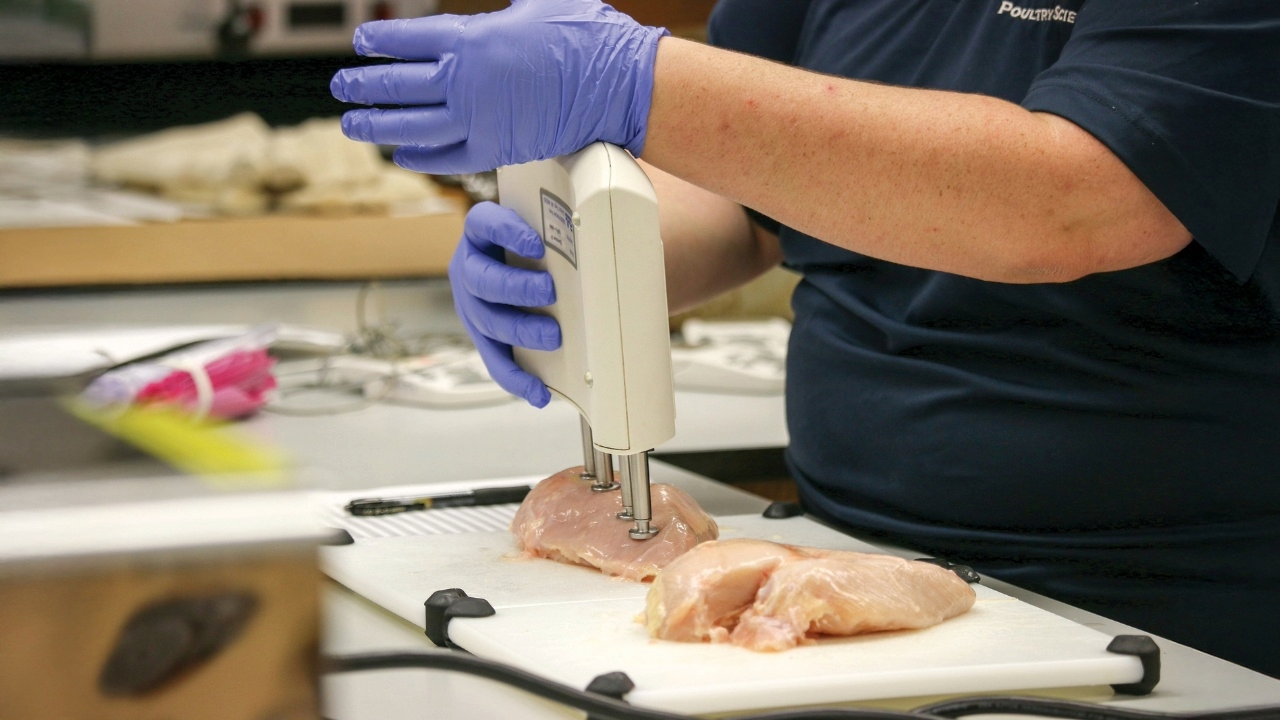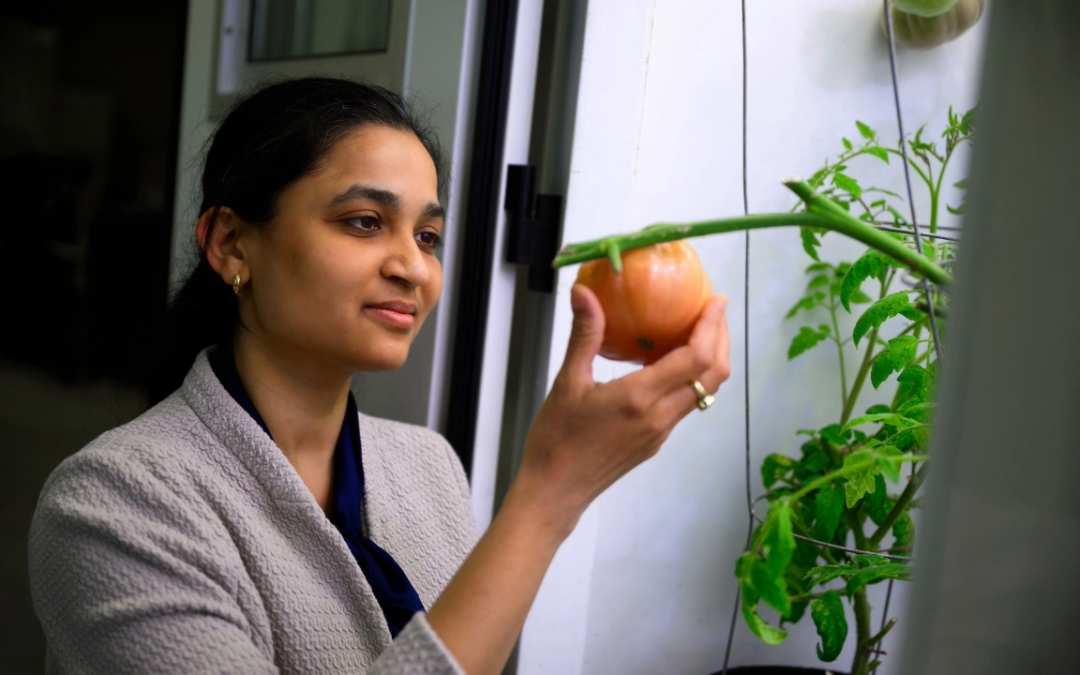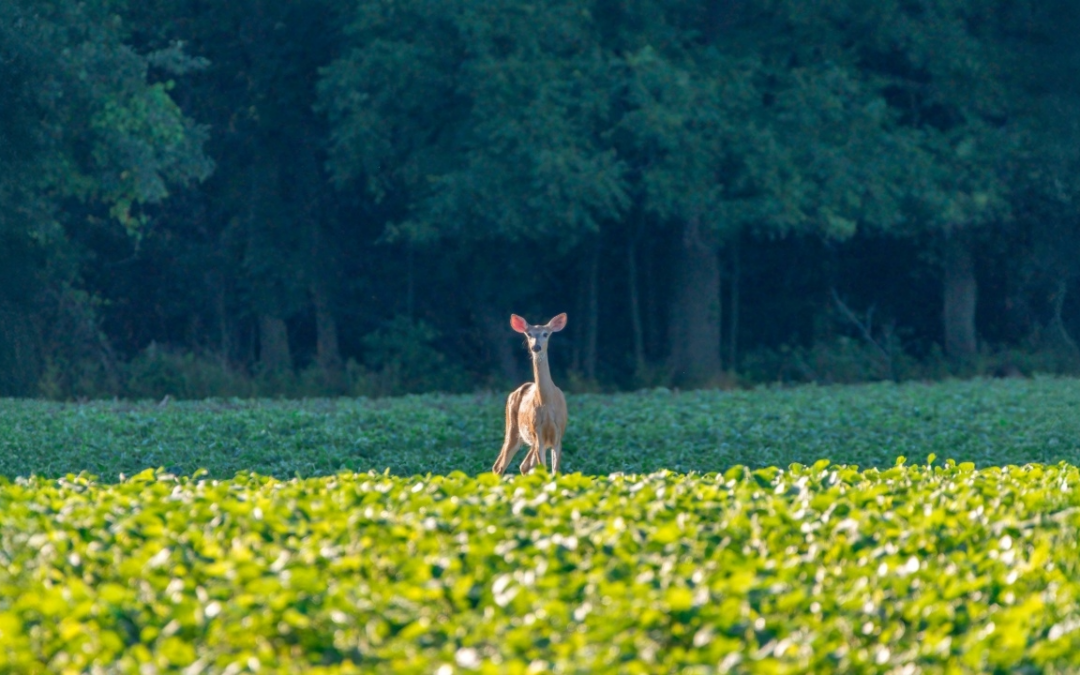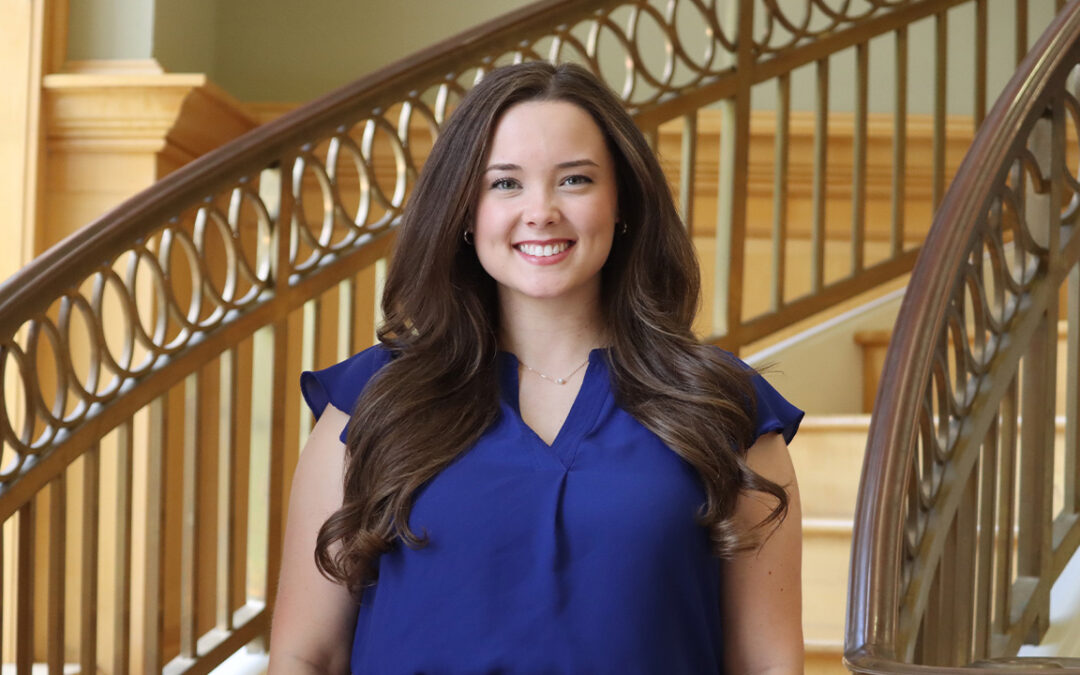When food poisoning strikes people often spend hours wondering what they ate or touched to cause the illness. Fortunately, poultry scientists at Auburn University dedicate countless hours to advancing food safety practices—from production and processing all the way to commercial retail.
Through the Alabama Agricultural Experiment Station, Bourassa, Belk and the team of researchers and students investigate strategies to control Salmonella outbreaks in retail poultry. Leading the project is Dianna Bourassa, an associate professor and Alabama Extension specialist in poultry science, specializing in food safety. Aeriel Belk, assistant professor in the Auburn University Animal Science department, plays a key role in the research team.
“Food-borne pathogens are all around us,” Bourassa said. “But through research, we can uncover why these pathogens persist—and identify practical ways to protect ourselves from them as we shop for food and consume it.”
Launched in 2024, this grant-funded project supports Auburn researchers in analyzing poultry-associated foodborne pathogens. The goal is to protect consumers through science-supported guidance. Over the next 4 years, updates from this project will continue as the team discovers new insights into pathogen dissemination.
Prioritizing safe food protocols, the U.S. Department of Agriculture Food Safety and Inspection Service (FSIS) has regulatory requirements of poultry plant processors. But even large agencies like FSIS cannot catch every single pathogen from process to plate.
To strengthen the baseline, this grant project extends beyond the scope of standard poultry processing safety protocols. It enhances microbial detection and uncovers threats that traditional protocols sometimes miss.
The primary objective of this project is survey sampling “not ready to eat” or raw poultry products from processing facilities. Some of these can include rehang, post-chill, packaging, and retail or further processing sites.
Notably, poultry often carry enteric bacteria like Salmonella and Campylobacter into processing facilities. As a result, contamination commonly occurs during handling. In response, comprehensive safeguards are in place to make poultry handling as secure as possible.
Through a meticulously controlled operation, poultry processing is designed to ensure humane treatment and food quality and safety from start to finish. During transport, crews place birds in ventilated crates and ensure they are not overcrowded. Then, thorough inspections and controlled conditions help mitigate contamination risks.
Upon arrival at the processing plant, the birds are kept calm and handled by staff to protect them from harm and stressors. After stunning, the carcass is dressed by removing feathers and internal organs. Following both visual and automated inspections, the carcasses are moved into the chilling process to halt bacterial growth.
There are many pathogen control strategies in place to help further the goal of controlling bacterial growth or pathogen presence in poultry meat. To combat contamination, processing companies use everything from antimicrobial processing aids to environmental monitoring. When addressing microscopic risks, processors turn to biomapping. Biomapping is a method of mapping microbial presence through careful, stage-by-stage sampling.
Working in partnership with the Agricultural Research Service (ARS), Bourassa and the food safety team conduct sampling beyond standard inspection requirements. Everything from tray pack items like breast fillets, thighs and wings to marinated or raw chicken portions are all sampled for testing.
“Considering Alabama is the second largest broiler producer in the country, we know how important it is to be able to find results in the scope of this project,” Bourassa said. “We are able to take sampling to another level than the typical requirements showing us just how prevalent pathogens are.”
To analyze retail risks, the second objective of this project is to investigate pathogen prevalence and survival in raw chicken. Sampling in big box stores and local grocers, faculty and student researchers are able to map pathogens in many ways. With everything from conventional, antibiotic free, organic, etc., the data seeks to better understand the survival of pathogens all the way to purchase.
To make this research even more precise, retail isolates of Salmonella and Campylobacter are matched with facility data. By linking isolates to facility data, Auburn researchers identify genetic traits linked with survival. From there, it becomes clear and how certain strains of pathogens withstand production and reach the end consumer.
To have more comprehensive data, the food safety team extends their testing methods. With 9 different ways to test for bacteria, they are doing everything they can to reveal traits, trends and trajectory of pesky pathogens.
“In FSIS regulatory sampling, if a facility has less than the threshold percent positive, it’s ranked Category 1—the best. Category 2 means it meets the regulatory standard, and Category 3 means it falls short,” Bourassa said. “We’re trying to see if what you see at the grocery store correlates with those categories. For testing, FSIS places the chicken in a bag and ships the liquid rinse for analysis, and we test the whole chicken right there in the rinse.”
Through research and educational outreach, the project aims to elevate pathogen control across the poultry supply chain. Armed with knowledge, the team also seeks to inform the public on how they can shop smarter by understanding science-backed results.
Bourassa said she hopes that this project continues to uncover the mysteries that surround food borne pathogens more closely as she and the team continue their work.
“From pre-harvest to raw product, our research spans across the board in poultry consumption and production safety in a farm to fork approach,” Bourassa said. “Every study gives us the ability to help consumers purchase safer products and every outreach program though Alabama Extension program helps us share the science in ways that matter.”





